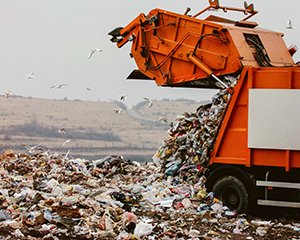
Featured Image: iStock.com/choice76
Economists saw it coming quite some time ago but nobody believed them. It’s finally happened. The recycling industry is on the brink of shutting down and not even the Pope’s radical environmentalism can save it.
Having said that, it’s important to remember that nothing happens immediately. It will be a slow, painstaking process, hindered by overly optimistic companies and activists, but it will happen. According to Dave Steiner, the CEO of Waste Management, America’s largest recycling company, the industry is experiencing a national crisis. Things are so volatile that some recyclers are preparing to do the once-unimaginable: charge residents for their recycling.
The recycling industry maintains that the American public, and their lazy recycling habits are to blame for this crisis. However, there are two side to every story. The real turning point in the recycling industry wasn’t the sluggish recycling, but the change in what people started throwing away. Something that was on the cards for a while but was not picked up by any of the recycling companies. The truth is that recycling companies have no one to blame but themselves.
The recycling Industry’s controversial refusal to evolve with Americans’ reading habits is perhaps the biggest reason for this downslide.
According to the American Forestry & Paper Association, between 1994 and 2014, U.S. newspaper recycling rates rose from 49.8 percent to 68.9 percent. But these rising rates were accompanied by a worrying trend.
Thanks to the Internet, the actual volume of newspapers that has ended up in bins declined during that 20-year period, from 15.81 million tons to 7.89 million tons.
The high tech facilities that these companies acquired were only designed to deal with and profit from recycling paper. The recycling industry managed to ignore the hollowing out of its business model for a few years because China’s boom drove up the price of most recyclables. But once the commodity boom went bust in 2010, U.S. recyclers lost their cover.
The recycling industry has faced similar issues in dealing with containers, which comprise the largest category of American waste. This is due to increasingly light packaging being produced by companies, a result of their own profit margins and pressure from Environmental activists.
The average weight of an aluminum beer can, for instance, declined 38 percent between 1972 and 2014, according to the Aluminum Association. Producers and distributors save money from that kind of shift, but it confronts the recycling industry with a new challenge
In 1990, a recycler would have needed 29 beer cans to make a pound, but needs 34 today: For recyclers dealing with thousands of tons of containers every year, that’s a recipe for higher costs and shrinking margins.
• All these problems could have easily been resolved with one word- foresight. Experts of the trade are at a loss to explain why no one saw this coming and why those who did, did nothing about it.
• The packaging and weight problem should have been relatively easy to solve. The recycling industry could have simply replaced the small blue bins with large recycling carts. When Florida rolled out carts in 2013, it saw an 85 percent increase in recyclables annually, from 32,000 tons to 60,000 tons.
• Recycling companies could have solved some of its plastic-sorting problems through technology investments, something they should’ve done in the growth years. And recyclers could have also improved their bottom lines by doing a better job of communicating best practices to consumers and involving the community in recycling.
As some of America’s largest recycling firms area all too willing to point out, recycling programs face plenty more problems. But recycling companies can’t ignore their own responsibility for the industry’s woes. For years, they failed to recognize that their previously profitable business models no longer matched the reality of American trash habits. What’s most scandalous is that, having created this mess, America’s recycling companies expect the people to pay to clean it up.
Kelly Sampson is a writer, blogger, and environmental enthusiast. She has strong opinions about climate change, the dogs vs. cats debate, and Oxford commas. She has lent Hummingbird International her engaging and spirited voice and turned our blog into a great place to find valuable information about e-waste, e-waste recycling, and the ITAD industry. Explore our blog to read more of her work.